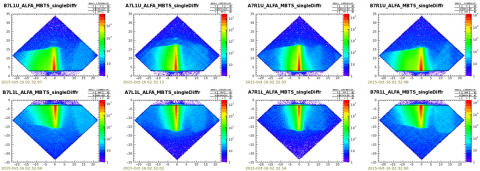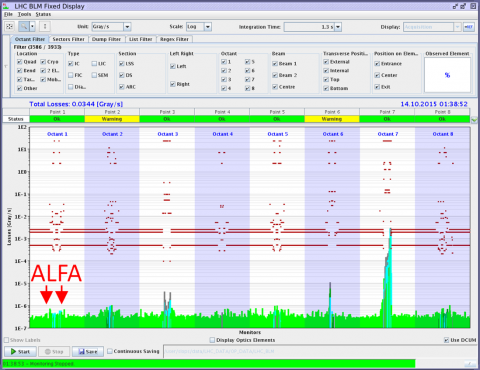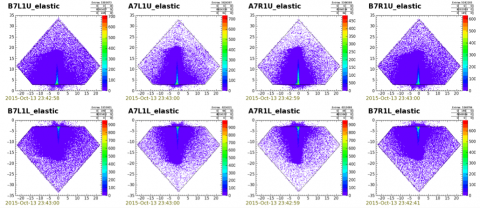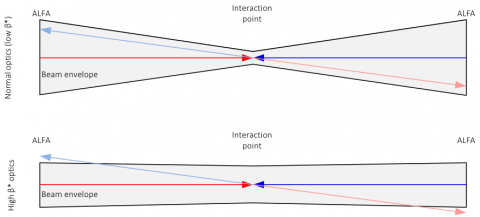Access to Collaboration Site and Physics Results
Sune Jakobsen
Sune Jakobsen is a fellow at CERN shared between the ATLAS experiment and Beam Instrumentation. Sune joined ATLAS in 2008 while doing his Master’s at the University of Copenhagen, but was immediately and permanently stationed at CERN to contribute to making and commissioning the hardware for the ATLAS sub-detector ALFA. Currently he is ALFA trigger coordinator, ALFA run coordinator and ALFA technical coordinator besides being responsible for the operation and development of the LHC luminosity detector called BRAN. In addition to his fascination for physics and detectors, Sune loves traveling – especially to Africa and Asia – and hiking in the mountains.

One week to do it all – Days 4-7: Diffractive data taking
On Thursday morning the first fill reached “Stable Beam”. We had prepared a sequence to move the ALFA detectors so, with the push of a bottom, they were all moved to exactly the right position for loss maps. The fill had 42 bunches (as opposed to the 3 bunches used in elastic data taking), so the trigger rates were much higher than before.

One week to do it all – Day 3: Preparing for Stable Beam
Tuesday at 23:55 I called the ATLAS shift leader and told them to stop the elastic physics run and ramp down the inner detector as the elastic program was over. But that’s when the problems started. For some reason, the inner detector could not ramp down and ATLAS requested – for the safety of the inner detector – that the LHC team touch nothing until the problem was solved. While this actually gave us more time taking data for elastic physics, LHC operators and representatives from the other experiments in the CERN Control Centre were really not too happy about the situation.

One week to do it all – Day 2: Elastic data-taking
No time to waste after the alignment. We had moved the detectors to about 2.8 mm from the beam, but the rates of particles passing the detectors indicated a very high background (mainly particles from the beam halo) so we decided to move the detectors out to about 3.5 mm. Now it was time for data taking. Since the detectors were so close to the beam, the LHC could not declare “Stable Beam”. Therefore ATLAS was prepared to manually override the normal safety feature, which only allows the tracking detectors to be powered fully once the LHC declares “Stable Beam”.

One week to do it all – Day 1: Setting up
I have the pleasure to work for a very special sub-detector of ATLAS, called “Absolute luminosity For ATLAS” or ALFA in short. ALFA aims to measure protons at very small angles relative to the beam. To measure these small angles, ALFA is installed on the beam pipe about 240 m away from the interaction point (IP) of ATLAS. The ALFA detectors can move inside the beam pipe in order to get very close to the beam. The detector is only used a few days out of the year when LHC is running with a very special beam setup.





